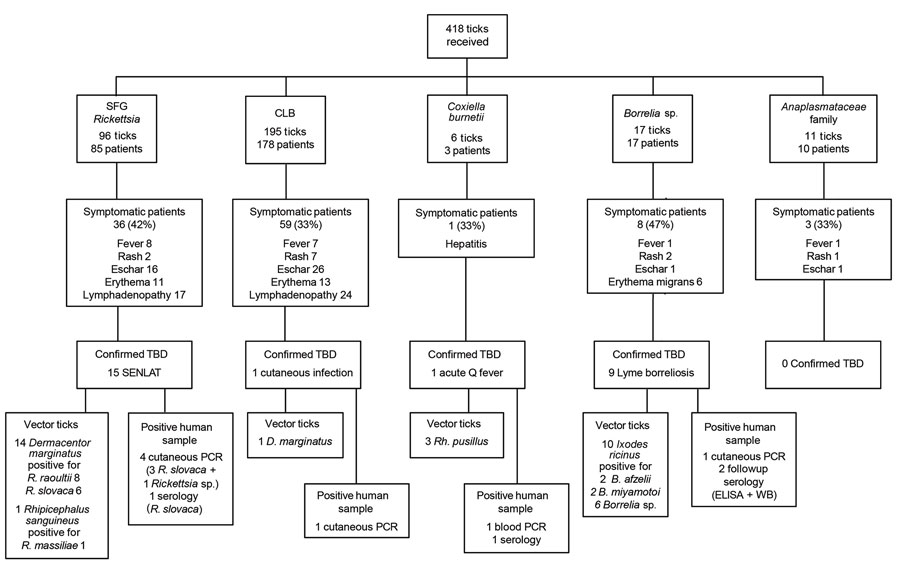Volume 29, Number 4—April 2023
Synopsis
Bacterial Agents Detected in 418 Ticks Removed from Humans during 2014–2021, France
Figure 3

Figure 3. Flow chart of bacteria and tick identification and patient signs/symptoms in study of bacterial agents detected in 418 ticks removed from humans during 2014–2021, France. Ticks were removed from 359 patients and sent to the Institut Hospitalo-Universitaire Méditerranée Infection in Marseille, France, where they were identified by using matrix-assisted laser desorption/ionization time-of-flight mass spectrometry or sequencing PCR products. Bacteria carried by ticks were isolated and identified by PCR or serologic methods at the institute. CLB, Coxiella-like bacteria; SENLAT, scalp eschar and neck lymphadenopathy syndrome; SFG, spotted fever group; TBD, tickborne disease; WB, Western blot.
Page created: February 13, 2023
Page updated: March 20, 2023
Page reviewed: March 20, 2023
The conclusions, findings, and opinions expressed by authors contributing to this journal do not necessarily reflect the official position of the U.S. Department of Health and Human Services, the Public Health Service, the Centers for Disease Control and Prevention, or the authors' affiliated institutions. Use of trade names is for identification only and does not imply endorsement by any of the groups named above.